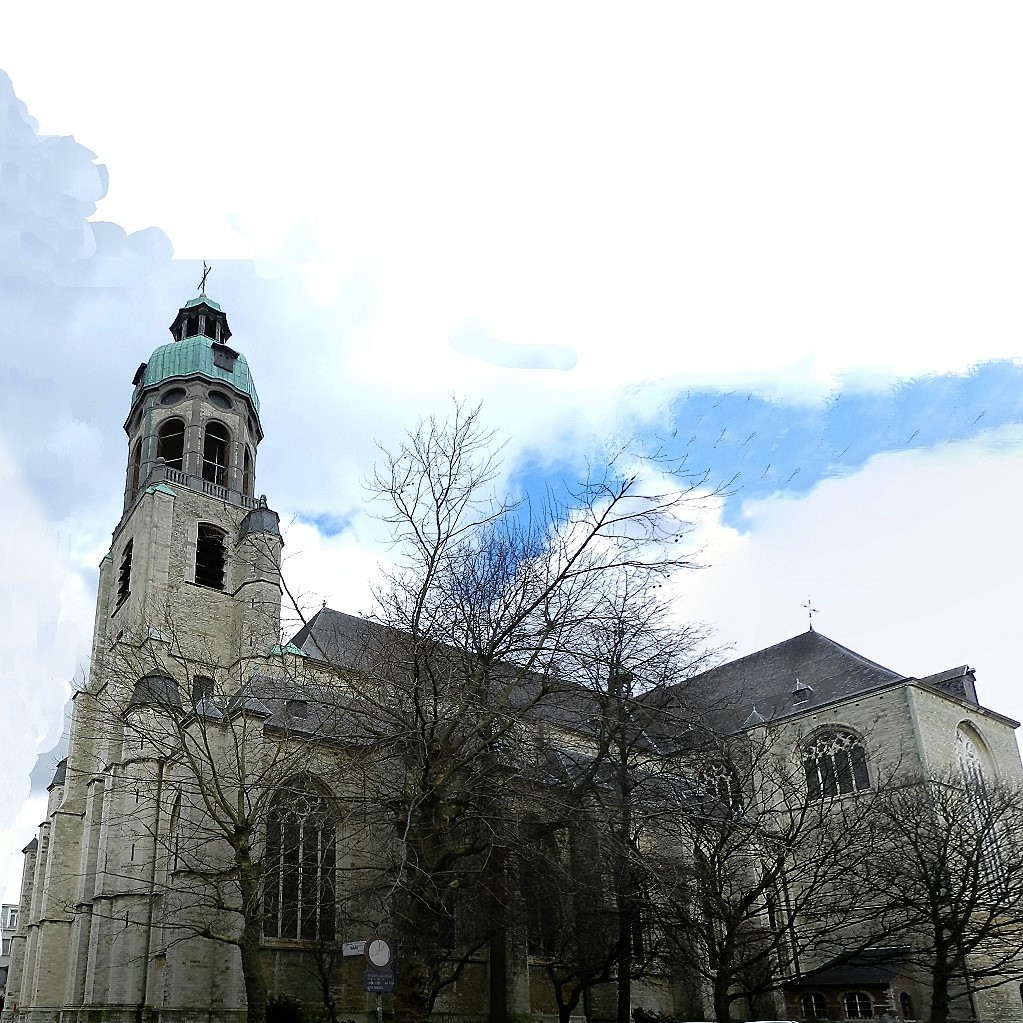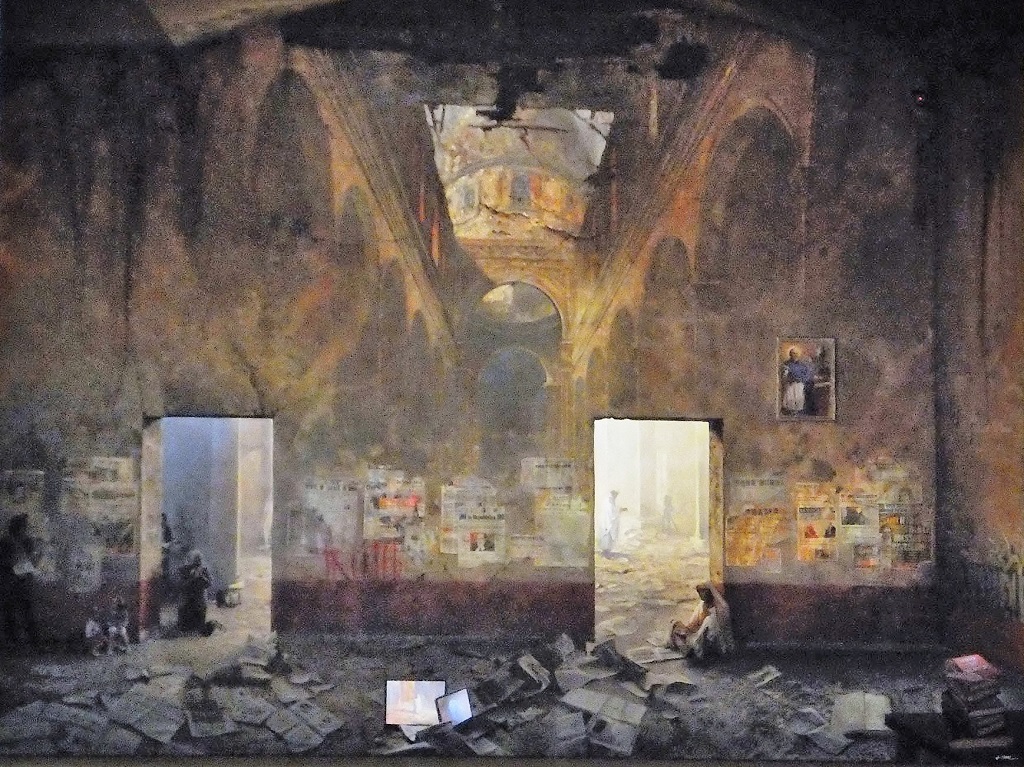Antwerp's St Andrew's Church, a revelation.
What is Truth?
What came before
The idea for a contemporary thematical artwork emerged after a wooden statue of Francis de Sales (Anton Sayens, 1878) was ‘found back’ during the basement cleaning. This Francis (1567-1619), bishopPriest in charge of a diocese. See also ‘archbishop’. of Geneva, was declared patron saintThis is a title that the Church bestows on a deceased person who has lived a particularly righteous and faithful life. In the Roman Catholic and Orthodox Church, saints may be venerated (not worshipped). Several saints are also martyrs. of journalists in 1923. While the reconstructed ‘Minters’ altar’ in the northern transeptThe transept forms, as it were, the crossbeam of the cruciform floor plan. The transept consists of two semi transepts, each of which protrudes from the nave on the left and right. focuses on the power of money, this statue in the southern transept can be seen as an apt counterpart, as it functions as the starting point for a meditation on the power of the media. Both money and media have an incomparable hold over contemporary society.
The new project
The project is based on the question that Pontius Pilate asks Jesus right before he is condemned to death: “What is truth?” (Jn. 18:38). French painter Alain Senez (°1948, Paris) depicted these words of despair in his eponymous work from 2012. As a starting point, the artist proposed the platonic idea that, as long as we remain locked inside the borders of our earthly existence, the truth is always altered by projection. The viewer is forced, as it were, to run into the ‘wall of his own projections’ first; but through both openings, the light of truth intrigues and enlightens the groping human search. Out of the dark foreground that falsely projects a church in ruins, human beings emerge, hoping to reach the true light eventually, with God in the hereafter.
This painting confronts you with societal reality; it literally forces you to spend time. Its broad general set-up, as well as its remarkable details slowly draw you in, making the message filter through with intensity.
Our ‘insight’, or rather ‘projections’, are also formed through the daily onslaught of information by the media. This idea is expressed not only in the abundance of newspapers from the entire world, suspended like posters, but also in the depictions of television, camera, and computer: all media standing between truth and audience. A newspaper snippet about Berlusconi illustrates that, when a monopoly is formed and political, economic and personal agendas intersect, the media become manipulative instruments in themselves.
The viewer is watched by a camera in the top right corner. This isn’t merely a playful reference to the ‘Big Brother’ society; it illustrates, above all, that the question of truth does not only concern actuality, but each of us.
he eternal question “What, in fact, is the truth?” is highlighted by the title of a handwritten book in the bottom right corner: “Quid est veritas.” The feather represents the old style in which the question was asked and came to us. The call for ‘truth’ is set in fashionable graffiti on the right wall; furthermore, its appeal screams across the posters on the fake wall in today’s world language, English.
Despite all these channels of information, we remain considerably in the dark. A man buries himself in his daily newspaper. Two children let the media craze be, and experience the truth playfully in their own way. The eastern person in the right light opening begs, praying, for the full truth (as the gate to justice), while at the left an older lady prays on her knees to keep searching for that truth in the light of Christian faith. This search for truth fed by religion is also depicted in the front page picture of an encounter with the Dalai Lama. John is very clear when he notes in his gospelOne of the four books of the Bible that focus on Jesus’s actions and sayings, his death and resurrection. The four evangelists are Matthew, Mark, Luke, and John. ‘Gospel’ is the Old English translation of the Greek evangeleon, which literally means ‘Good News’. This term refers to the core message of these books. (Jn. 3:16-21) that “Whoever does the truth comes to the light so that it can be seen that their actions were done in God.”
Francis de Sales is a key figure in this work. Despite this Baroque painting’s intent to depict the essentials of his person, such a depiction is also ‘untrue’: it shows an idealized saint, rather than a real person of flesh and blood. But the saint’s truth in the hereafter also reaches us in a distorted way. A virtual camera shot is shown in mirror view on the tv screen.
In the tradition of 16th-17th century altars, the statue of the saint is placed above the painting. His search for truth is represented by the book (sign of his learnedness) that he is holding in one hand, as well as by the heart in his other hand, sign of his love for God, the Truth.
A philosophical subject in a Christian house of God? Yes, because: “I was born and came into the world for this reason: to testify to the truth. Whoever accepts the truth listens to my voice.” (Jn. 18:37)


